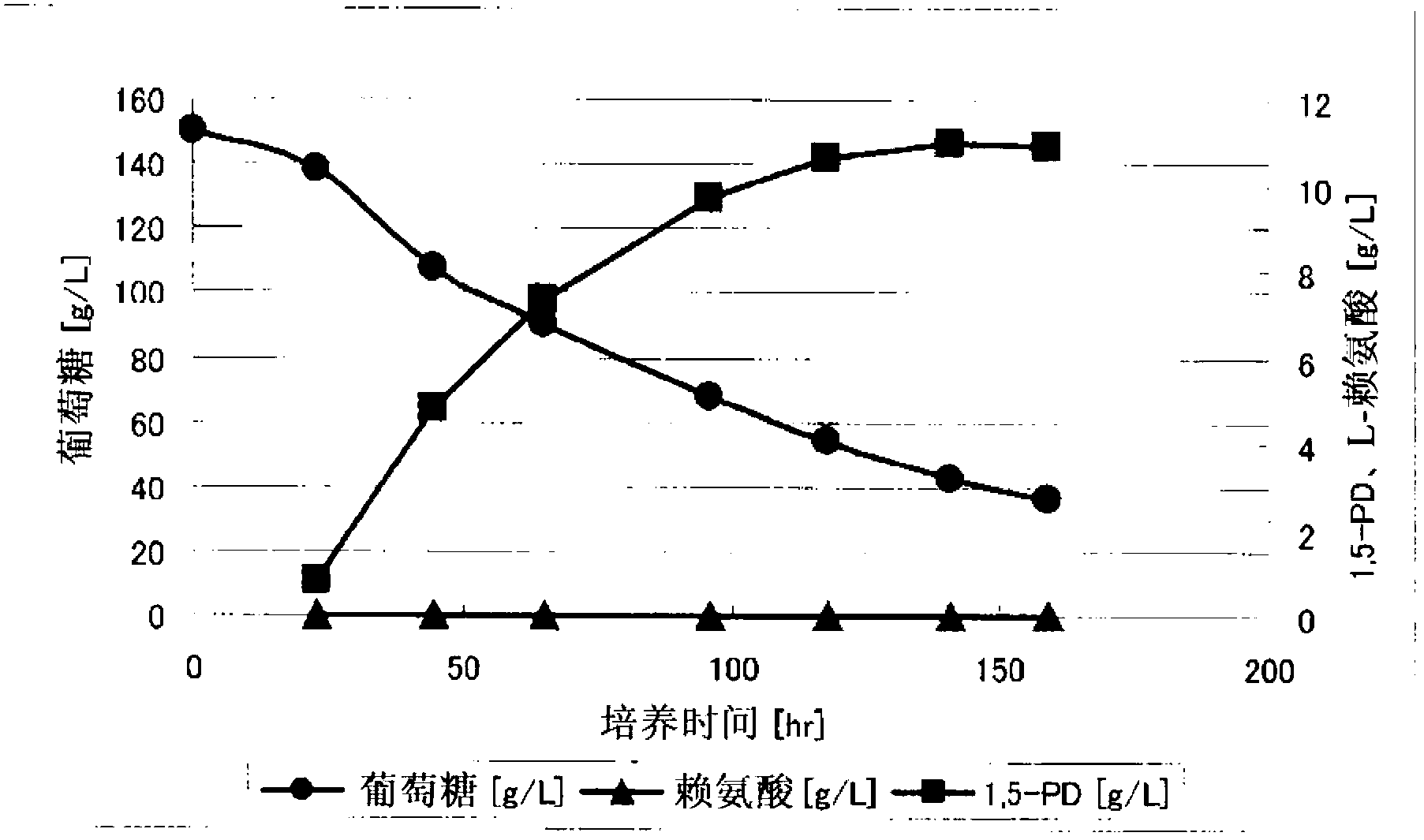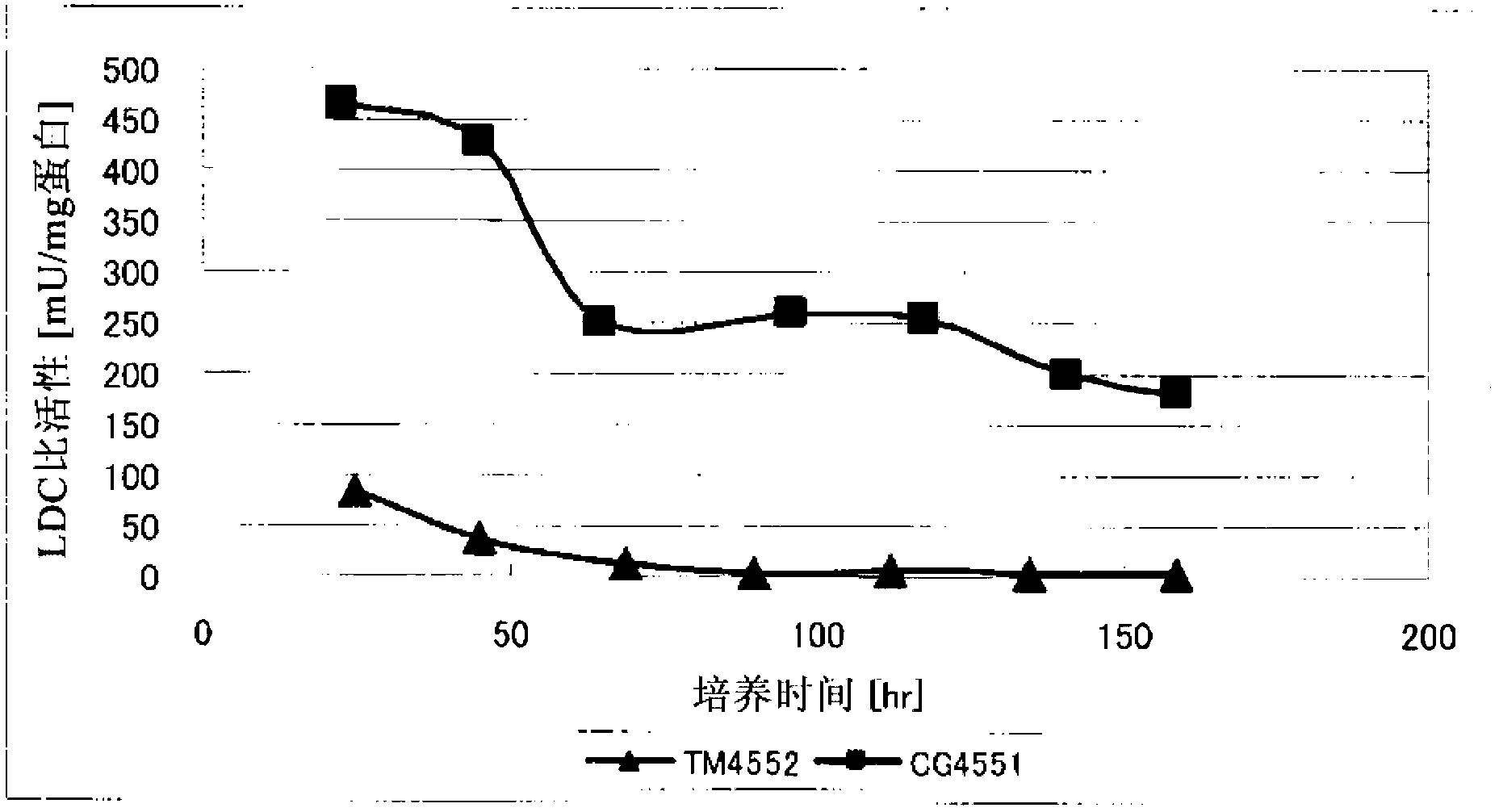Method for producing 1,5-pentanediamine
A manufacturing method and a technology for pentamethylenediamine, which are applied in the directions of biochemical equipment and methods, carbon-carbon lyases, enzymes, etc., can solve the problem that the fermentation yield of 1,5-pentamethylenediamine is not improved, the economic problems, and the generation of by-products. Lysine etc.
- Summary
- Abstract
- Description
- Claims
- Application Information
AI Technical Summary
Problems solved by technology
Method used
Image
Examples
Embodiment 1、 comparative example 1
[0095] (1) Production of Corynebacterium glutamicum capable of fermenting and producing L-lysine
[0096] In order to produce Corynebacterium glutamicum capable of synthesizing L-lysine, a precursor of 1,5-pentanediamine, L-lysine-fermenting bacteria were created by introducing effective mutations into aspartokinase (AK) . Corynebacterium glutamicum AK-1 strain (hereinafter referred to as AK-1 strain) was prepared referring to the method described in Apppl. Microbiol. Biotechnol., (2002), 58, p.217-223. That is, this operation is specifically performed as follows.
[0097] Genomic DNA solution prepared according to conventional methods from Corynebacterium glutamicum ATCC13032 strain was used as an amplification template, and the oligonucleotide designed with reference to the base sequence of the AK gene (accession number: BA000036) registered in the database (GenBank) Nucleotides (sequence number: 4, 5) were used as a primer set for PCR, and the resulting product was electr...
PUM
 Login to View More
Login to View More Abstract
Description
Claims
Application Information
 Login to View More
Login to View More - R&D
- Intellectual Property
- Life Sciences
- Materials
- Tech Scout
- Unparalleled Data Quality
- Higher Quality Content
- 60% Fewer Hallucinations
Browse by: Latest US Patents, China's latest patents, Technical Efficacy Thesaurus, Application Domain, Technology Topic, Popular Technical Reports.
© 2025 PatSnap. All rights reserved.Legal|Privacy policy|Modern Slavery Act Transparency Statement|Sitemap|About US| Contact US: help@patsnap.com



